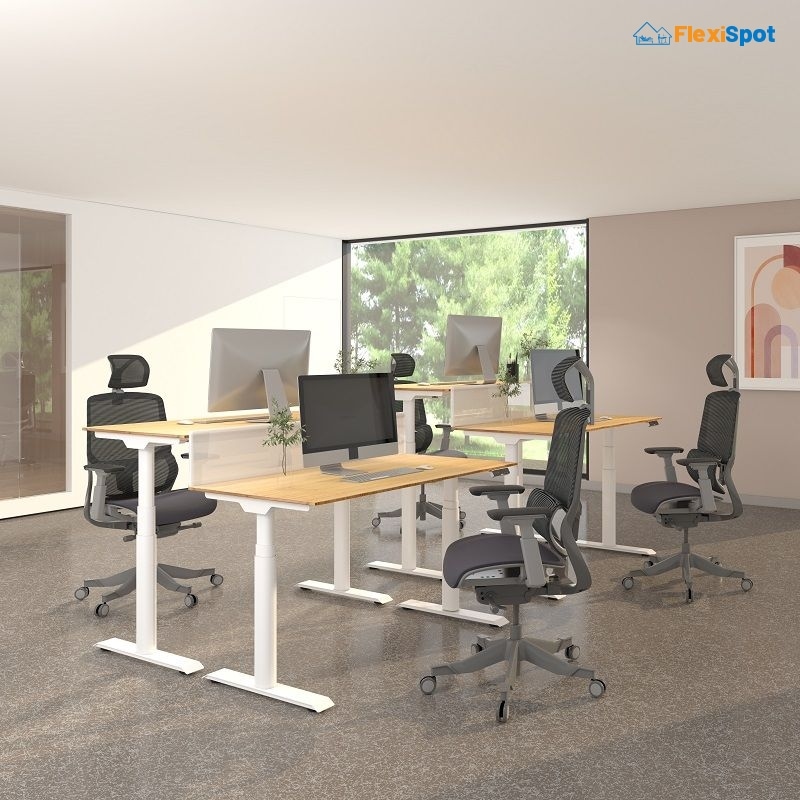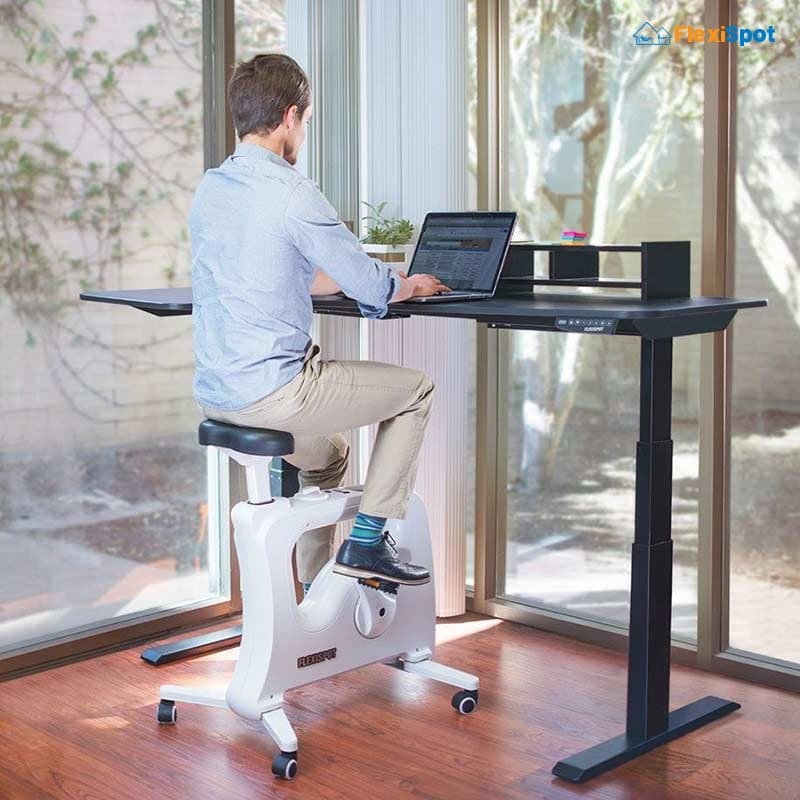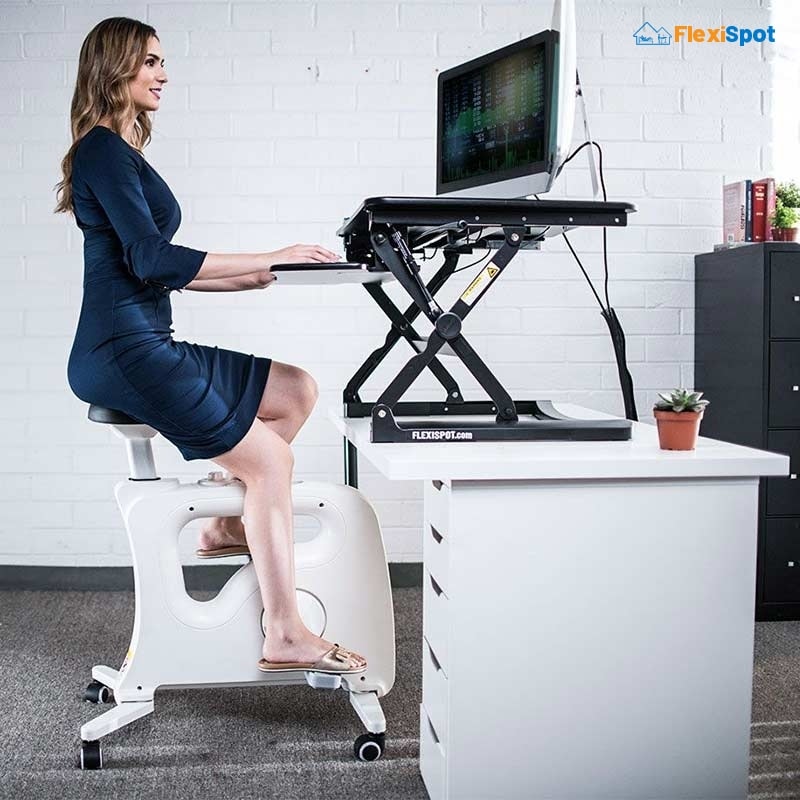Many office workers face ongoing or progressive stress that affects their will to show up to work, leading to job turnover rates and absenteeism rates, especially in high-stress industries. One way to deal with this is for administrators to institute astute ergonomics in their offices.
There are two factors to attaining astute ergonomics. It starts with finding workers who can handle the job's pressure and responsibility. Then, ensure there is a comfortable office environment by eliminating occupational and health hazards. This involves modifying the office equipment, tasks, and work environment to meet employees' needs and alleviate physical stress.
Having a conversation with your employees is the best place to start. The feedback can help you know what office equipment and tasks to make the work environment more conducive. Such initiatives can go beyond reducing physical stress. Eventually, you can have lower absenteeism and medical copay rates due to fewer cases of occupational MSDs (musculoskeletal disorders).
But is this a wise investment? Is it worth the cost? Let's take a closer look.
Astute Ergonomics: What Are They?
When it comes to office setups, the term "ergonomics" is often bandied about without much regard for what it actually entails. In short, ergonomics is the study of how people interact with their environment and how those interactions can be optimized to reduce strain and increase productivity. When it comes to the workplace, this often means making sure that employees have the right tools and resources at their disposal to get the job done.
Astute ergonomics goes one step further by taking into account the unique needs of each individual employee. This might involve customizing a workstation to accommodate a specific physical disability or modifying tasks to minimize repetitive strain injuries.
Astute ergonomics calls for periodic reviews of work practices, design specifications of workstations, and a critical review of your company’s entire production process.
This can be a challenging task. Fortunately, considering the following insurer and OSHA (Occupational Safety and Health Administration) compliance measures can give you a suitable baseline:
Workman’s compensation files and records
Written reports of problems faced by workers
OSHA-compliant illness & injury records
Reviewing such records can point to most of your office's ergonomic issues. However, there’s a more straightforward approach.
Astute ergonomics calls for a more proactive role in identifying ergonomic issues outside the scope of co-pay and OSHA compliance reports. This involves observing workplace changes that result in muscle aches and strain.
The following administrative measures can reveal a treasure-trove of such information:
Assessing previous workplace ergonomic reviews
Reviewing HR reports and employee surveys
Clinical and non-clinical reports
Formal incident & accident reports
Employer health benefits survey
Interviewing workers also gives a clear picture of the ergonomic issues facing them in their workstations.
Astute Ergonomics: The Key to Avoiding Office Injuries
Don't let your office turn into a pain factory
So far, we’ve learned that astute ergonomics are not nuanced. Proper execution calls for a SWOT analysis of your company’s production systems, effectively identifying the hidden risks. Starting as soon as possible not only allows you to get ahead of the issues, but it also shows predictable patterns you can use to eliminate future workplace-related strain and stress.
The best place to start is by reviewing how:
Posture, office furniture, and equipment setup lead to MSD (musculoskeletal disorders)
How often workers perform a certain repetitive task is completed
The effort workers require to finish their tasks (time and energy)
Project timelines and shelf lives
Here’s how such risk factors affect the cost of astute ergonomics:
1. Excessive Force Exertion
Handling heavy items exposes the spinal column, knees, and other muscle groups to excessive force. The same is true when you exert pressure to control office furniture or tools over long periods. Such strain and stress take a toll on the body that may not be apparent initially. Eventually, they may need to spend more time on the task or some days off after such excretion, which affects your company's bottom line from an administrative standpoint.
2. Repetitive Tasks
Performing the same tasks or several tasks requiring similar motion ranges is unhealthy. Doing so for extended periods forces you into unnatural postures or body positions that strain muscles. This could lead to soft tissue damage and loads of related medical bills.
3. Maintaining Awkward Postures over a Long Period
Sometimes posture and body positioning places stress on your body. Reaching over the shoulder, leaning, bending, or squatting for long periods messes with spinal alignment. The best way to deal with this is to invest in storage spaces that are accessible from within your ergonomic reach zone.
4. Localized Pressure
Localized pressure is more common and harmful among construction workers and more physically demanding industries. However, it also presents small but cumulatively harmful doses within the office. Examples include resting wrists on the hard edges of desks or reclining on an office chair that offers inadequate back support.
What Is The Cost Of Ignoring Astute Ergonomics?
OSHA spent decades studying the health and cost implications of workplace ergonomics. According to this study, $1 out of every $3 filed under workman’s compensation stems from ergonomic-related concerns. This dates back to 2000 and has an estimated cost implication of $15 to $20 billion in the United States.
Recent data (2013 Bureau of Labor Statistics report) explains that ergonomic issues remain a costly factor in operating a business.
Key takeaways from the data include:
Ergonomic-related injuries account for a third of absenteeism cases in various industries
Workers suffering such injuries require at least 11 days off work, which is more than other workplace injuries and illnesses (8 days)
So what happens when businesses ignore astute ergonomics? The cost can be high. Injuries sustained from poor ergonomics can lead to long-term absences from work, which hurts the bottom line. And a high turnover rate can also be costly, as it takes time and money to train new employees. In other words, ignoring astute ergonomics is a recipe for disaster.
What Can You Do to Mitigate the Associated Risks and Costs?
OSHA has clear workplace ergonomic directives under the General Duty Clause, Section 5(a) (1). These work even in the absence of industry-related guidelines. However, OSHA does not enforce such measures but relies on employers' good faith.
Here are some things you can do to go beyond such directives for the health and safety of your employees:
Pay Attention to Your Staffers’ Behaviors
Focusing on the relationship between your workers, tasks, equipment, and job environment helps institute astute ergonomics. By observing how they work, you can get an idea of how to improve their environment. Maybe they’re hunching over their keyboards or stretching to reach their monitors. Perhaps they’re constantly getting up to adjust the blinds or move around the office. These are all clues that something in their workspace isn’t quite right.
Such adaptations highlight your employees' ergonomic "pain points" and shouldn’t be brushed off. Instead, discuss such issues and review measures to reduce the associated risks.
But, don’t stop there. Perform these reviews quarterly or bi-annually to identify and eliminate all hazards.
Consider Injury Reports
Comprehensive injury reports are essential to properly identifying, diagnosing, and treating MSDs. OSHA (29 CFR Part 1904) requires employers to record and report work-related illnesses, injuries, and fatalities.
Early reporting can point towards interventions that can prevent such injuries from causing permanent damage or disability.
Such measures allow administrators to put themselves in the shoes of office grunts, familiarizing them with the tasks, processes, and office facilities that harm their staffers. It also shows them how such issues can cause frequent or incapacitating injuries.
Once such issues are spotted, it becomes easier for the employer to address specific ergonomic gaps in functions and the environment.
Such reports can help your company respond to MSD symptoms in the following manner:
Train your staff to recognize early signs of MSDs
Encourage them to report any symptoms at an early stage
Facilitate prompt medical interventions and subsequent rehabilitation
Mitigate the severity of injuries and cost of workman’s compensation claims
Guidelines for workers under rehabilitation or recovery in the office
Formulate job modifications
Tracking mechanisms for MSD injury trends in your office
Allows companies to gauge the success of ergonomic initiatives
These assessments allow you to make the necessary changes. But, their success is hinged on whether you’ll continually assess your measure’s effectiveness and adjust.
Astute Ergonomics: Putting Policy into Action
We can’t afford to view MSDs as an isolated issue. It’s a symptom of the underlying pressure and stress that office workers face every day. Thus, astute ergonomics offers preventative measures to help administrators keep everyone safe and healthy.
But, it only works when such recommendations are implemented rather than sitting on an administrator's shelf. The earlier you follow such insights, the more time and money you save.
Here are a few ways to quantify the ergonomic process:
Impactful Managerial Input
Ergonomic initiatives, like others that lead to significant workplace restructuring, work best when they have full managerial support. The management should start the conversation and define the desired outcome. Delegating responsibilities to less senior staffers streamlines this long and tedious process.
Unwavering managerial support ensures:
Everyone works towards clear goals and objectives for the process
Workers feel free to raise ergonomic concerns since they’ll be heard
Assign responsibilities to staff members and constitute ad-hoc committees
The rest lies in clear communication and implementation of corrective measures at all stages. You may also need to review and re-adjust your goals whenever possible.
Allowing Employees to Voice Concerns from the Early Stages
An ergonomic issue can affect a specific worker and not the others. For instance, tall staffers may have more legroom problems than their short colleagues. So, the best approach directly involves assessing and developing practical awareness measures that affect everyone's ergonomic concerns.
However, attending to everyone’s concerns can be chaotic, especially if you have a large workforce. Circulating preliminary review forms can help administrators identify some of the hazards and workshop some solutions. From there, the management can request feedback and invest the right resources for each employee.
With time, such recommendations can feature in company policy strengthening health and safety compliance.
Frequent Workshops and Seminars
Training seminars and workshops may be a drag. But, they are an essential part of astute ergonomics. During these sessions, employees get to learn the benefits of such initiatives. They also learn how to identify MSD symptoms.
You can establish the proper channels for relaying occupational and health concerns. That way, your employees can report any issue at an early stage and allow the organization to take appropriate preventative measures.
Evaluate Progress
As mentioned, astute ergonomics require periodic evaluations and corrective steps to improve their effectiveness. This involves assessing if you’ve hit your ergonomic goals and what it takes to ensure success at every phase.
Conclusion
Astute ergonomic office setups are not expensive. All it takes is a strong commitment from the managerial level, staff training, and the appropriate policy framework to ensure success. Sure, the cost of ignoring such concerns is not immediate. But, the cumulative damage can cause untold suffering, even leading to permanent injury or disability in your workforce.
Is there an easier way to institute astute ergonomics? Sure, you can start by procuring the most ergonomic office furniture from a trusted manufacturer. Leave all your ergonomic concerns to Flexispot! We have a vast catalog of ergonomically astute office furniture, supplies, and related accessories. Contact us today for unbeatable deals and discounts on selected furniture. We also have flexible shipping, delivery, and return policies.







